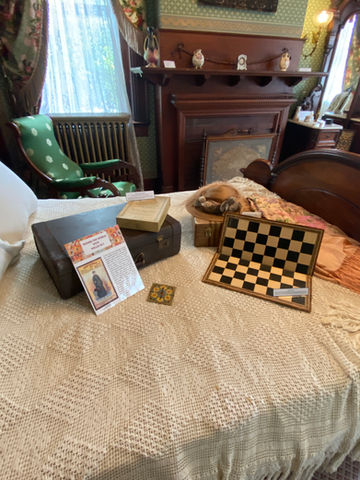
Victorian Pastimes: Games of Yesteryear
During the long nineteenth and early twentieth centuries, family leisure time was marked by a variety of diversions inside the home. Victorian board games, puzzles, parlor games, and card games could be found in the homes of both the elite and of the working class, with differences in quality and content present due to access and wealth disparities. This exhibit highlights the rise and transformation of the American board game industry and the use of gaming in the home for comfort during times of hardship. The exhibit was inspired by the Hunter’s extensive puzzle and game collection and the mental and emotional effects of the ongoing coronavirus pandemic in our communities.
Mass Production and Moral Instruction
The 1800s in the United States witnessed a period marked by change. The rise of industrialization led to the creation of the middle class, a major shift from rural living to urban living, and subsequent improvements in children’s rights. As a result, a shift occurred away from the home being characterized as a women’s economic domain to a place of education and entertainment. Many of these families began encouraging children to play games to develop motor skills and provide moral instruction. The board game manufacturers happily obliged.
With the distinction now between home and workplace, and machines doing more and more jobs, leisure time became common in many households. Adults began using games as a way to encourage spending quality time amongst their social circles, as well as between parents with their children. Early adult games were mostly card games or conversation card games, and the 1870s witnessed the rise in popularity of board games amongst adults. Board games played around a table encouraged open dialogue and play for all involved. Puzzles and games, in their own way, became the great equalizer among players.
The open communication stimulated by games led to a sense of community and solidified the home as a place for instruction, guidance, and comfort. The comfort and community that gaming brought to the Victorians continued throughout the next century and can be felt today. In times of trouble or chaos, games brought a sense of normalcy and communication between people and helped them cope with the common experience of grief and loss during the period.
Expanding in Popularity: 19th century through Coronavirus Pandemic
During the first winter of the Civil War, The Checkered Game of Life sold 40,000 copies, an unheard-of amount during that time. Other board games available in mass also witnessed unusually high sales. The increase of sales during a time of war and heartache further illustrates the rise of Khome gaming as a method of comfort. This tradition continues today. In modern history, after September 11, 2001, traditional board game sales rose as people used these games to come together in companionship after tragedy. Games allowed them to find consolation and strength among their intimate friends and family in the face of great tragedy.
During the beginning of the coronavirus pandemic in 2020, while many businesses were faltering, the board game and video game industries both witnessed a surge in sales. The video game industry reached $179 billion worldwide, with many users playing online games to socialize during lockdown. Naturally, by the later part of 2020, many gamers were in need of a digital detox. This shift away from technology resulted in a replacement of virtual games with the physical. Board game sales increased 20% worldwide with many products sold being classic games, such as Clue, Monopoly, and Candy Land. Jigsaw puzzles were purchased at even higher rates, with numbers that have not been seen since the puzzle craze of the 1930s. One of the premier modern puzzle makers, Ravensburger, even reports selling out of their products.
_edited.jpg)






















